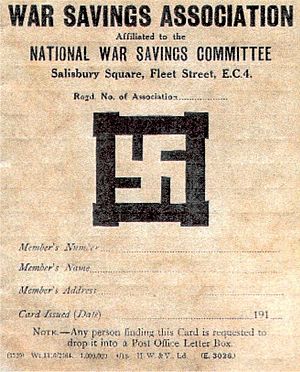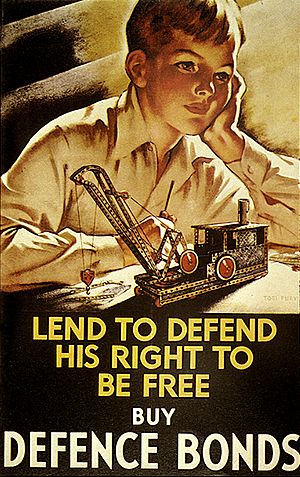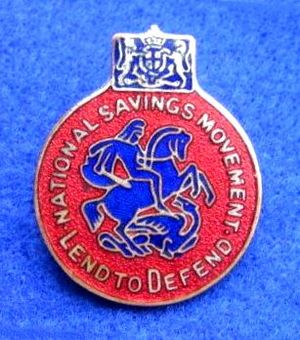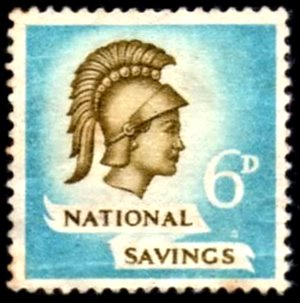National Savings Movement facts for kids

The National Savings Movement was a special way people in Britain could save money between 1916 and 1978. It helped the government get money when it spent more than it collected in taxes. This movement was super important during World War II because it helped raise money for the war effort.
Even in peacetime, it was an easy and safe way for everyday people to save small amounts of money. The movement grew to have about 7 million members. It eventually stopped in the 1970s as new ways of saving became popular. The savings plans offered by the movement usually didn't pay a lot of interest, but your money was very safe because the government guaranteed it.
Contents
How the Movement Started and Grew
The National Savings Movement began in March 1916. It was first called the National Savings Committee. Many volunteers helped out in local areas, and there were also paid government workers. Different groups worked together to make up the movement, like the Trustees Savings Banks and National Savings (which used to be called the Post Office Savings Bank).
By 1946, the movement had many government workers helping it. In 1950, there were about 185,000 local savings groups. Around 7 million people were members! People had saved over £6,100 million in small amounts. The money in the Trustee Savings Banks alone reached £1,000 million.
On March 30, 1966, a special party was held in London to celebrate the movement's 50th birthday. Queen Elizabeth II even attended!
Why the Movement Ended
On July 30, 1976, the government announced that it would stop paying the government workers who helped the movement. This was part of cuts to public spending. Without this help, the movement couldn't work anymore. Its main committee met for the last time on February 16, 1978. Attempts to change the movement into a new money management service didn't work out. This was because the government and banks didn't give it enough financial support.
Wartime Campaigns
The movement was especially busy during wartime when the government needed a lot more money. During World War II, a "War Savings Campaign" was started to help pay for the war.
Local "savings weeks" were held all over the country. These events were promoted with posters that had powerful messages. Some posters said things like "Lend to Defend the Right to be Free" or "Save your way to Victory." Another popular slogan was "War Savings are Warships," showing how saving money directly helped build ships for the war.
Symbols of the Movement
One of the first symbols used by the movement was the swastika. However, this symbol was changed before World War II began. It was replaced with an image of St. George slaying the dragon. This change happened because the swastika was adopted by Nazi Germany, and the movement didn't want to be associated with it.
Old Records and Collectibles
You can sometimes find old records from local savings committees in county archives. These are like old files and documents that show how the movement worked in different areas.
There are also many printed items and other collectibles from the movement. These include leaflets, membership certificates, and posters made in the popular art styles of the time. You can also find savings stamps and enamel badges. These badges were given to members who had saved for a long time.
See also
- Liberty bond
- National Savings & Investments
- War bond




